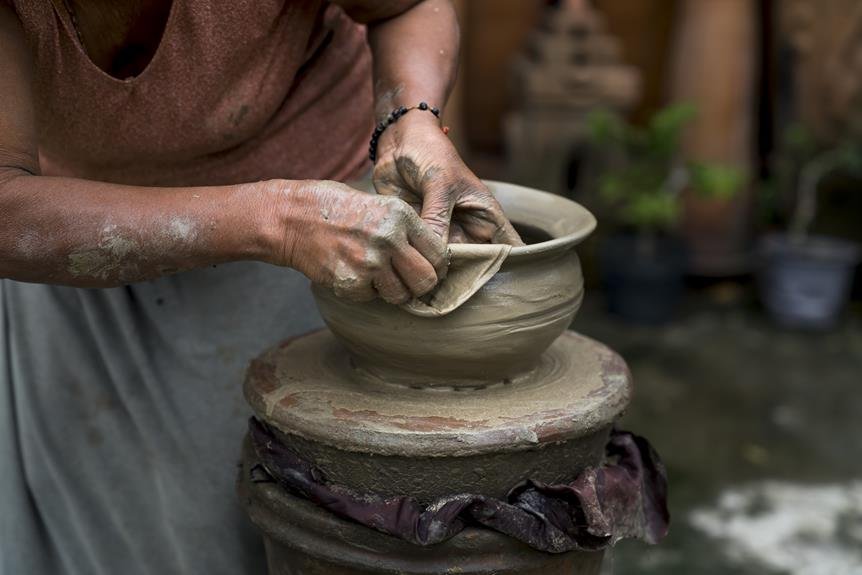Do you find yourself wondering if M&Ms can ever develop mold?
In this article, we will explore the factors that contribute to the growth of mold on M&Ms. You will gain a better understanding of the role moisture and temperature play in molding these beloved candies.
We will also delve into how packaging and storage conditions can impact the occurrence of mold. By following our tips, you can prevent mold growth and extend the shelf life of your M&Ms.
Key Takeaways
- Moisture is a major factor that contributes to mold growth on M&Ms.
- Mold spores require moisture to multiply and grow on the surface of M&Ms.
- Lower temperatures and well-ventilated storage areas can help prevent mold growth on M&Ms.
- Proper packaging and storage conditions, such as using moisture barriers and airtight containers, can minimize the risk of mold formation and extend the shelf life of M&Ms.
Factors That Contribute to M&M Mold Growth
There are three key factors that contribute to M&M mold growth.
First, moisture plays a crucial role in the development of mold on M&Ms. When the candies are exposed to high humidity levels, water can accumulate on their surface, creating a favorable environment for mold spores to grow. Additionally, if M&Ms are stored in a moist location, such as a damp pantry or refrigerator, it increases the likelihood of mold growth.
The second factor is temperature. Mold thrives in warm environments, typically between 77 to 86 degrees Fahrenheit (25 to 30 degrees Celsius). If M&Ms are stored in a place with elevated temperatures, such as near a heat source or in a warm room, the likelihood of mold growth significantly increases.
Lastly, the presence of oxygen is essential for mold to grow on M&Ms. Mold spores are airborne and can settle on the candies, but without oxygen, they can't reproduce and grow. Therefore, proper storage in airtight containers can help prevent mold growth on M&Ms.
To minimize the chances of mold growth on M&Ms, it's crucial to store them in a cool and dry place, away from direct sunlight and sources of heat. Additionally, keeping them in airtight containers can help preserve their freshness and prevent mold from developing.
Understanding the Role of Moisture in Molding M&Ms
To understand how moisture contributes to the molding of M&Ms, you need to consider its role in creating a favorable environment for mold spores to grow. Moisture provides the necessary conditions for mold spores to germinate and thrive on the surface of M&Ms.
Here are three key points to help you understand the role of moisture in molding M&Ms:
- Moisture attracts mold spores: Mold spores are microscopic fungi found everywhere in the environment. When moisture is present, it acts as a magnet, attracting these spores to the surface of M&Ms.
- Moisture provides a breeding ground: Once mold spores land on the surface of M&Ms, the presence of moisture creates the perfect breeding ground for them to multiply. Mold spores require moisture to grow and reproduce.
- Moisture promotes mold growth: Mold spores feed on organic matter present in M&Ms, such as sugars and fats. Moisture helps dissolve these nutrients, making them readily available for mold spores to consume, leading to rapid mold growth.
In summary, moisture plays a crucial role in molding M&Ms by attracting mold spores, providing them with a breeding ground, and promoting their growth.
To prevent mold growth on M&Ms, it's important to keep them stored in a dry environment with low humidity.
The Importance of Temperature in Preventing M&M Mold
To prevent mold growth on M&Ms, you should maintain an optimal temperature as it plays a crucial role in inhibiting the growth of mold spores. Mold spores are microscopic organisms that can be found everywhere, including on the surface of M&Ms. However, they require specific conditions to grow and reproduce, and temperature is one of the most important factors.
Mold spores thrive in warm and moist environments, typically between 77°F and 86°F (25°C and 30°C). At these temperatures, mold spores can germinate and form visible mold colonies on the surface of M&Ms. However, by keeping the temperature below 50°F (10°C), you can significantly slow down or even prevent mold growth.
Lower temperatures create an inhospitable environment for mold spores. The cold inhibits their metabolic activities and slows down their reproduction. Additionally, refrigeration or freezing can extend the shelf life of M&Ms by preventing the growth of mold.
It is important to note that maintaining a consistent temperature is crucial. Fluctuations in temperature can promote condensation, leading to increased moisture levels and providing a favorable environment for mold growth. Therefore, it's recommended to store M&Ms in a cool and dry place, away from direct sunlight and sources of heat.
How Packaging and Storage Conditions Affect M&M Mold
Proper packaging and storage conditions play a crucial role in preventing the growth of mold on M&Ms. Mold thrives in environments with high humidity and moisture levels. By ensuring that M&Ms are packaged and stored correctly, you can minimize the risk of mold growth and extend the shelf life of the product.
Here are three key factors to consider when it comes to packaging and storage conditions:
- Moisture barrier: M&Ms should be stored in packaging that provides an effective moisture barrier. This prevents moisture from entering the package and coming into contact with the chocolate, which can promote mold growth.
- Temperature control: Storing M&Ms at temperatures below 75°F (24°C) helps to inhibit mold growth. Higher temperatures can create a favorable environment for mold to develop.
- Proper ventilation: It's important to store M&Ms in well-ventilated areas to prevent the buildup of humidity. Good air circulation helps to reduce moisture levels, decreasing the likelihood of mold formation.
Tips for Preventing M&M Mold and Extending Their Shelf Life
To prevent mold growth and extend the shelf life of your M&Ms, there are several tips you can follow.
First, make sure to store your M&Ms in a cool and dry place. This is because mold thrives in warm and humid conditions. Avoid exposing your M&Ms to direct sunlight or high temperatures, as this can accelerate the growth of mold.
Secondly, keep your M&Ms tightly sealed in their original packaging or transfer them to an airtight container. This will help to prevent moisture from entering and reduce the chances of mold formation.
Additionally, it's important to check the expiration date on the packaging before consuming your M&Ms. Even though M&Ms have a long shelf life, consuming them after the expiration date may increase the risk of mold growth.
Lastly, try to consume your M&Ms within a reasonable time frame. While M&Ms can last for several months or even years when stored properly, their quality may deteriorate over time.
Conclusion
In conclusion, the growth of mold on M&M candies can be influenced by various factors such as moisture, temperature, packaging, and storage conditions.
To prevent mold growth and extend the shelf life of M&Ms, it's important to store them in a cool and dry environment, away from excessive moisture. Proper packaging and sealing can also help protect the candies from mold contamination.
By understanding these factors and following preventive measures, one can enjoy M&Ms without the risk of mold.






0 Comments